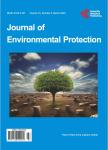Effects of Salt Pond Restoration on Benthic Flux: Sediment as a Source of Nutrients to the Water Column
Effects of Salt Pond Restoration on Benthic Flux: Sediment as a Source of Nutrients to the Water Column作者机构:U.S. Geological Survey Menlo Park CA USA U.S. Fish and Wildlife Service Fremont CA USA U.S. Geological Survey Vallejo CA USA
出 版 物:《Journal of Environmental Protection》 (环境保护(英文))
年 卷 期:2016年第7卷第7期
页 面:1064-1071页
主 题:Benthic Flux Nutrients Algal Blooms Restoration
摘 要:Understanding nutrient flux between the benthos and the overlying water (benthic flux) is critical to restoration of water quality and biological resources because it can represent a major source of nutrients to the water column. Extensive water management commenced in the San Francisco Bay, Beginning around 1850, San Francisco Bay wetlands were converted to salt ponds and mined extensively for more than a century. Long-term (decadal) salt pond restoration efforts began in 2003. A patented device for sampling porewater at varying depths, to calculate the gradient, was employed between 2010 and 2012. Within the former ponds, the benthic flux of soluble reactive phosphorus and that of dissolved ammonia were consistently positive (i.e., moving out of the sediment into the water column). The lack of measurable nitrate or nitrite concentration gradients across the sediment-water interface suggested negligible fluxes for dissolved nitrate and nitrite. The dominance of ammonia in the porewater indicated anoxic sediment conditions, even at only 1 cm depth, which is consistent with the observed, elevated sediment oxygen demand. Nearby open-estuary sediments showed much lower benthic flux values for nutrients than the salt ponds under resortation. Allochthonous solute transport provides a nutrient advective flux for comparison to benthic flux. For ammonia, averaged for all sites and dates, benthic flux was about 80,000 kg/year, well above the advective flux range of -50 to 1500 kg/year, with much of the variability depending on the tidal cycle. By contrast, the average benthic flux of soluble reactive phosphorus was about 12,000 kg/year, of significant magnitude, but less than the advective flux range of 21,500 to 30,000 kg/year. These benthic flux estimates, based on solute diffusion across the sediment-water interface, reveal a significant nutrient source to the water column of the pond which stimulates algal blooms (often autotrophic). This benthic source may be augmented



